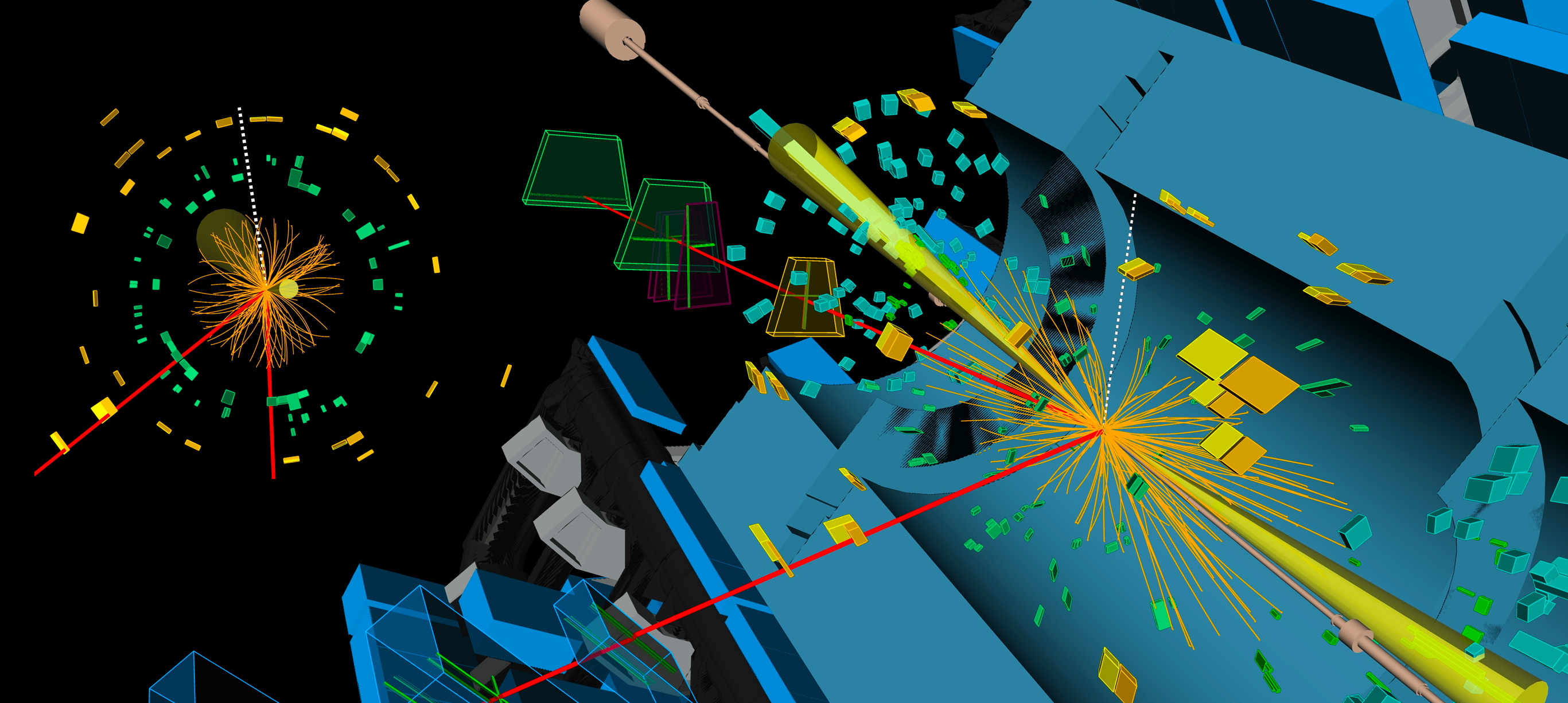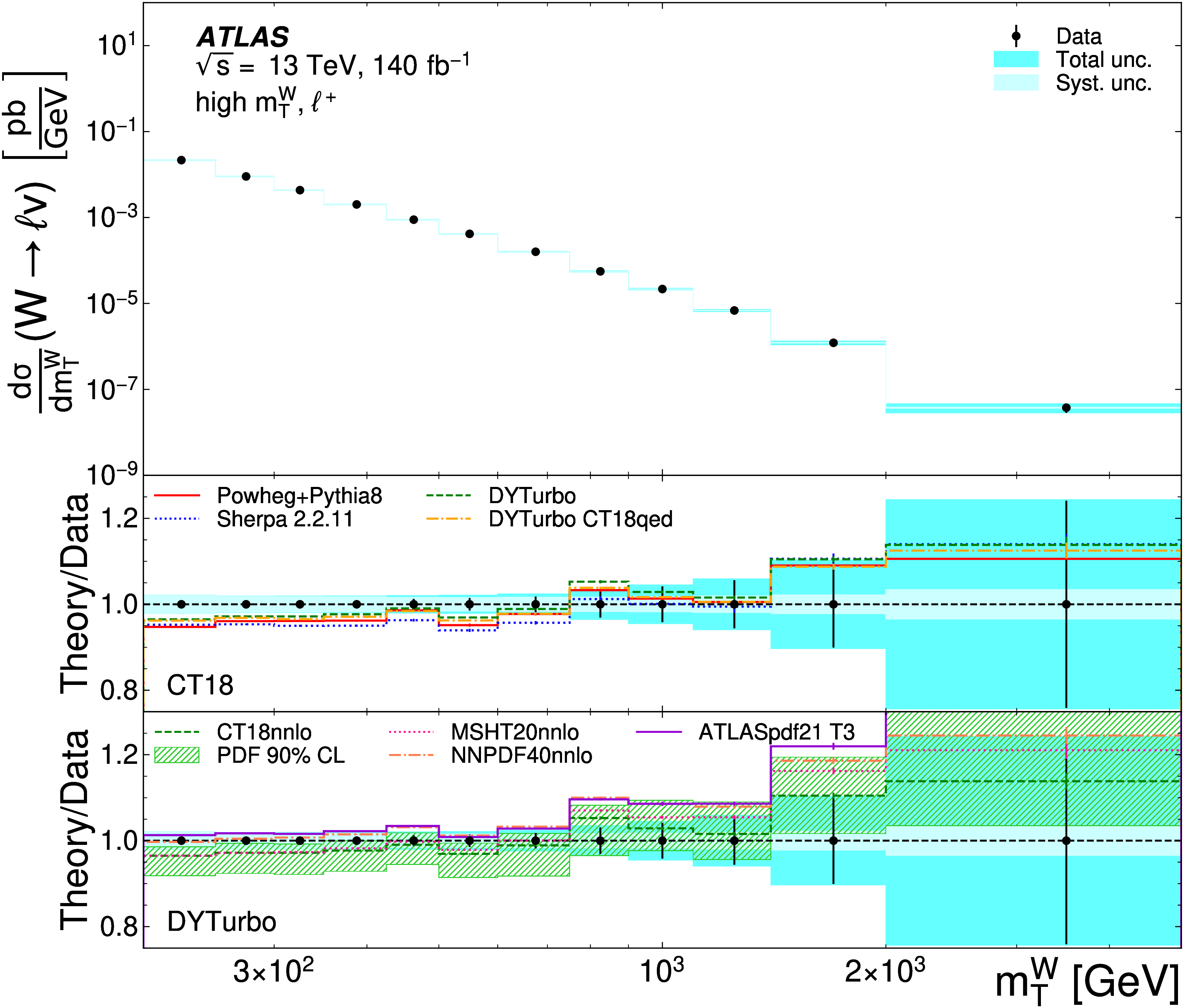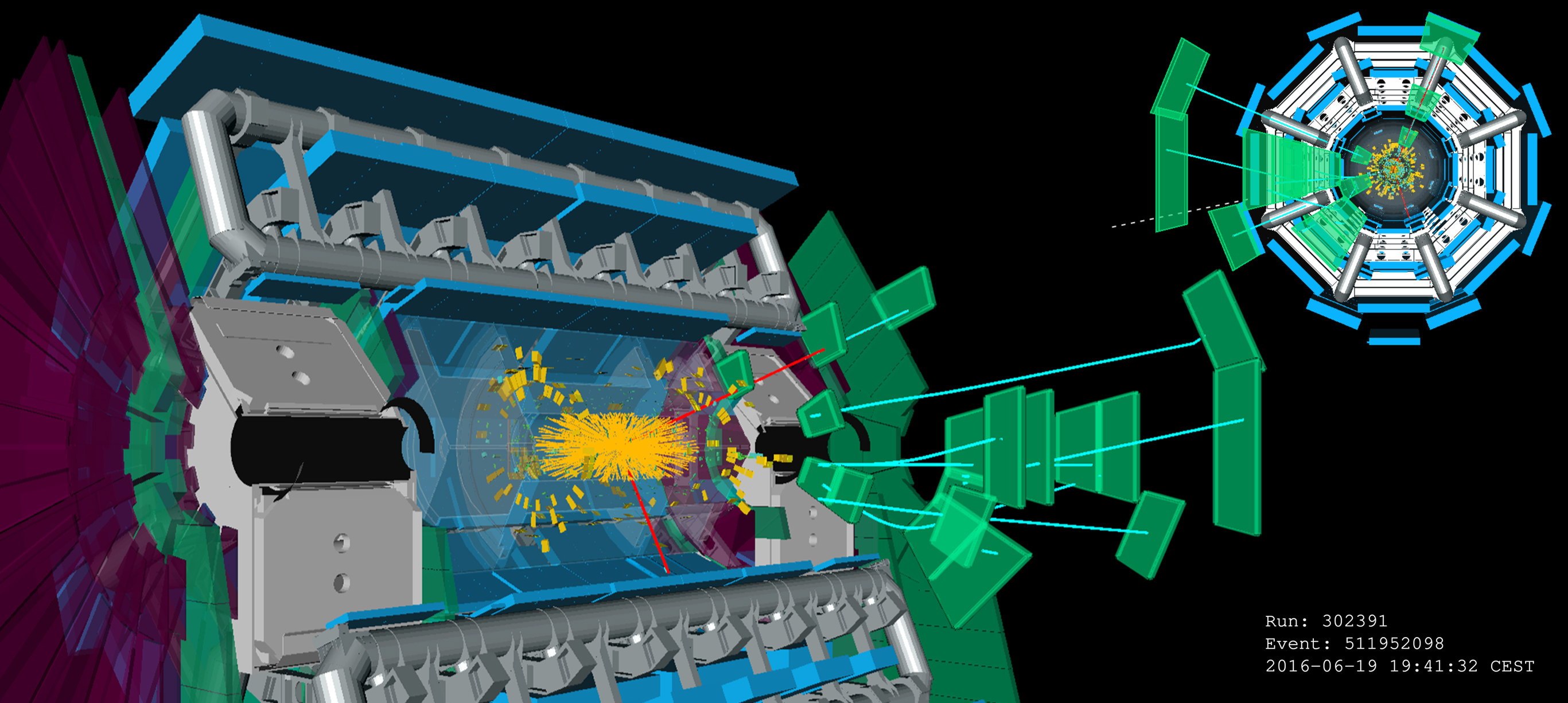ATLAS probes the Higgs mechanism in the scattering of W boson
4 April 2025 | By
The W and Z bosons – the carriers of the weak force – offer unique insights into the fundamental interactions of nature. Unlike massless particles such as photons, these massive bosons can exist in a “longitudinally polarised” state, where their spin can be oriented perpendicular to their direction of motion. This behaviour arises directly from the Higgs mechanism, which gives the particles their mass. By precisely measuring this polarisation – particularly in rare processes like vector boson scattering (VBS) – physicists perform powerful tests of the Standard Model.
In a new study presented at the Moriond EW conference, the ATLAS Collaboration reported the first evidence – with 3.3σ significance – of vector boson scattering involving longitudinally polarised, same-sign W bosons. The new analysis also established stringent limits on “doubly longitudinally polarised” VBS, where both W bosons are longitudinally polarised. These results were achieved through an analysis of the complete LHC Run 2 dataset, combining innovative analysis methods with the full statistical power of the collected data.
VBS interactions can occur through several processes, including the remarkable self-interactions of W and Z bosons (Figures 1a and 1b) and interactions involving the Higgs boson (Figure 1c). This latter interaction is particularly interesting, as it is a direct probe of the electroweak symmetry breaking mechanism of the Higgs.
ATLAS reported the first evidence – with 3.3σ significance – of vector boson scattering involving longitudinally polarised, same-sign W bosons.
All three production mechanisms can create the same remarkable experimental signature: two same-sign W bosons decaying into leptons (electrons and muons), with the outgoing quarks appearing as jets with large angular separation in the ATLAS detector. As shown in the event display, the two same-sign charged leptons are accompanied by two particle jets near the LHC beamline. The polarisation of the W bosons is reflected in the distinct kinematic and angular properties of the recorded leptons and jets.
However, fully reconstructing the kinematics of these W bosons is prevented by the presence of neutrinos, which pass through the ATLAS experiment without leaving a trace. Further, spotting the most interesting events – in which both W bosons are longitudinally polarised – is especially difficult, as it accounts for only about 10% of same-sign WW events. To address these challenges, researchers developed specialised deep neural networks (DNNs) to differentiate background processes and identify the various polarization states of same-sign WW events (see Figure 2). For instance, these DNNs are designed to distinguish between WW events where both W bosons are longitudinally polarised, only one is longitudinally polarised, or neither are.
There remains much to be learned about the Higgs mechanism and scattering of polarised W bosons. The novel techniques developed for this new study pave the way for the future measurements. ATLAS researchers look forward to collecting and analysing data from the ongoing LHC Run 3, as the sensitivity to the rare scattering processes will only continue to grow with more data.
Learn more
- Evidence for longitudinally polarized W bosons in the electroweak production of same-sign W boson pairs in association with two jets in pp collisions at 13 TeV with the ATLAS detector (arXiv:2503.11317, see figures)
- Moriond EW 2025 presentation by Daniel Camarero Munoz: Triboson and VBS results
- Moriond EW 2025 presentation by Max Stange: Evidence for longitudinal polarized WWjj-EW scattering with ATLAS
- ATLAS hunts for new physics in the scattering of W bosons, Physics Briefing, 8 August 2023









